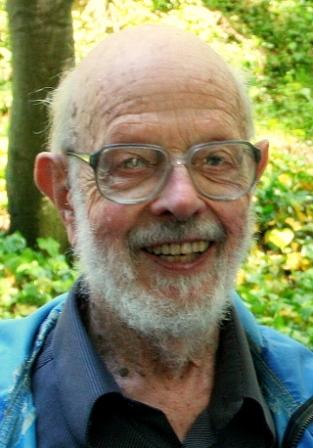

|

|
IN MEMORIAM
Erich Lehmann
Professor of Statistics, Emeritus
UC Berkeley
1917 - 2009
Professor Erich Lehmann, a major figure in the field of statistics, died on September 12, 2009, at the age of 91. Lehmann, who taught in the University of California, Berkeley’s Department of Statistics, touched the lives of many people in statistics and beyond. He was a leading figure in the second generation of statisticians, following the establishment of the modern field by Neyman, Fisher, and Wald before the Second World War. As is usual after a period of explosive innovation, confusion reigned. It was Lehmann’s great talent to clear the fog and build a coherent theoretical structure. This was reflected in his great books, Testing Statistical Hypotheses (1959) and Theory of Point Estimation (1983), which were the centerpieces of graduate statistical education for most of the last half of the century, and have been translated into many languages. The structures he built incorporated much of his own research into decision theoretic questions, the theory of unbiased estimation, rank-based methods including their asymptotic theory, and many other areas of statistics, including concepts of dependence, multiple comparison procedures, the history of statistics, and much else.
Lehmann achieved all the major honors awarded in the field and beyond: the prestigious Wald and Fisher lectureships, the presidency of the Institute of Mathematical Statistics and the editorship of its main journal, The Annals of Mathematical Statistics. He was granted a remarkable three Guggenheim Fellowships in 1955, 1966, and 1980 and was elected to the American Academy of Arts and Sciences in 1975 and to the National Academy of Sciences in 1978. The Universities of Leiden and Chicago awarded him honorary doctorates. At Berkeley he held Miller Professorships twice and served reluctantly but very effectively as department chair.
Born in Strasbourg, France, on November 20, 1917, Lehmann was raised in Frankfurt am Main, where his family had deep roots. Fleeing the Nazis with his family in 1933, he graduated from high school in Switzerland and attended college in Cambridge, England. He enrolled in Berkeley as a graduate student in 1940 and never left, save for stints in the Air Force during World War II, when he was stationed in Guam, and leaves at Columbia University, Princeton University, and Stanford University. Obtaining his Ph.D. in 1946, he embarked on a teaching career that included the supervision of more than 40 doctoral students of his own, several of whom became leaders in the next generation of statisticians. This achievement was due not only to his great scientific stature but also to remarkable personal qualities. He was kind and generous of spirit, had an unusual sensitivity to the feelings of others and a great astuteness about the world, what could be achieved, and how to do it. As a consequence, his impact on his students and colleagues went well beyond the scientific. They honored him with a Festschrift (1983) for his 65th birthday, a series of three Lehmann Symposia (1992, 1994, 1997), and a forthcoming volume of selected works. Another symposium is planned and memorial sessions will be held at 2010 annual international meetings in Vancouver, Canada, and Goteborg, Sweden.
In addition to his masterpieces, Lehmann published three important, less advanced texts: Basic Concepts of Statistics (with his longtime collaborator and friend J. L. Hodges Jr.), Nonparametrics: Statistics Based on Ranks, and Elements of Large Sample Theory. After a second edition of his classic Testing Statistical Hypotheses in 1986, he recruited young collaborators for further editions of his major texts: George Casella for Estimation in 1998 and Joe Romano for a third edition of Testing in 2005. These were major revisions that brought the books back to the frontiers of research. In his last decade he turned his energies to the history of the field in whose development he played such an important part, publishing his professional autobiography, Reminiscences of a Statistician: The Company I Kept, and an account of the productive rivalry between Fisher and Neyman tentatively titled Fisher, Neyman, and the Creation of Classical Statistics, completed shortly before his death. He also enjoyed a lifelong passion for literature and in retirement translated stories by favorite authors such as Adalbert Stifter and Wilhelm Raabe into English, seeking to give them a wider audience than they previously enjoyed. At the time of his death he was working with Fritz Scholz, a former student, on a new edition of his Nonparametrics to be used in conjunction with the popular “R” statistical language.
Erich Lehmann is survived by his wife, Juliet Popper Shaffer, herself an accomplished statistician and a collaborator during the later part of his life, and by a loving, blended family that includes his three children, Stephen, Barbara and Sophia; three step-children, Ron, Len and Tanya; eight grandchildren; and three great-grandchildren.
Peter J. Bickel, with the Lehmann family
2010